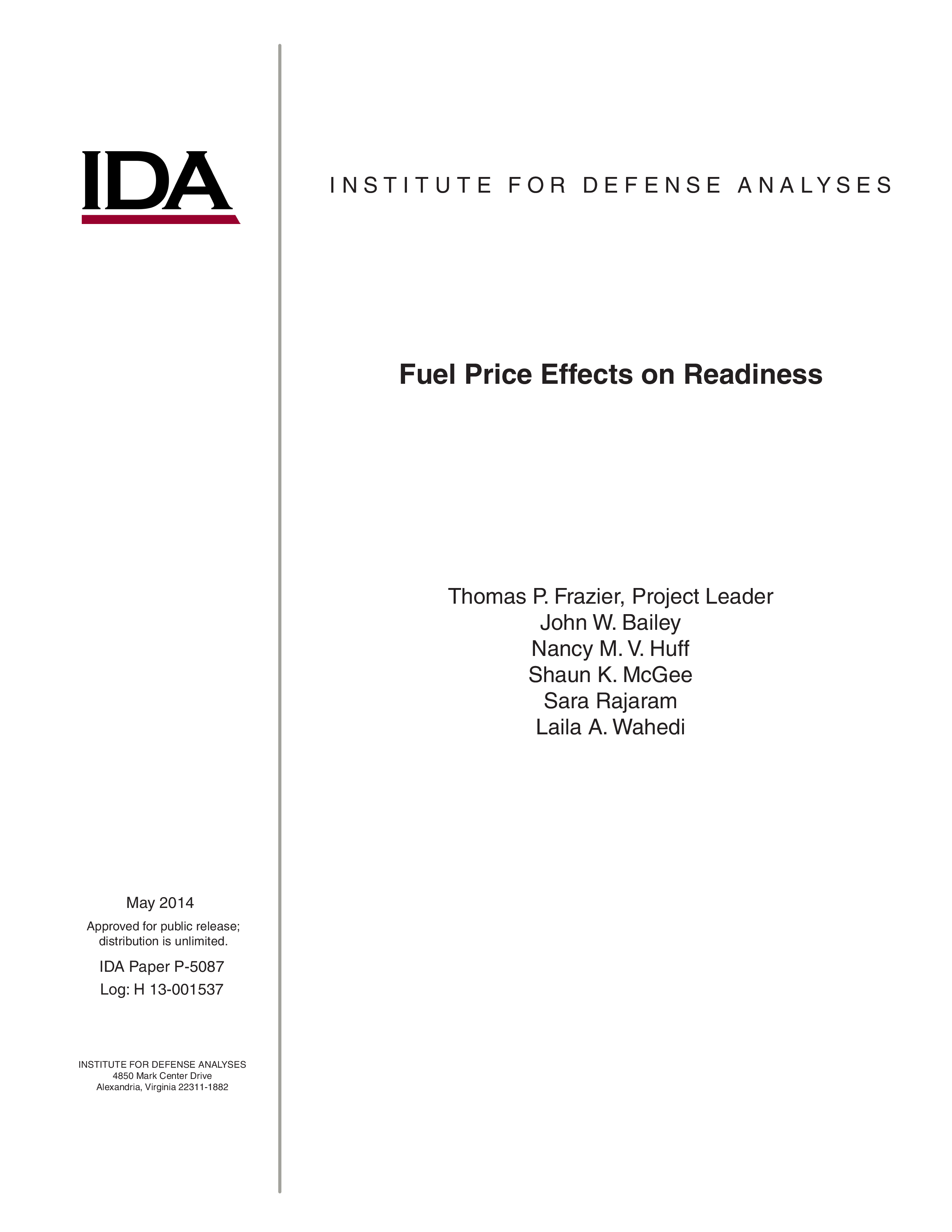Fuel Price Effects on Readiness
May, 2014
IDA document: P-5087
FFRDC: Systems and Analyses Center
Type: Documents
Division: Cost Analysis and Research Division
Authors:
IDA document: P-5087
FFRDC: Systems and Analyses Center
Type: Documents
Division: Cost Analysis and Research Division
Authors:
Authors
Thomas P. Frazier, Project Leader, John W. Bailey, Nancy M. V. Huff, Shaun K. McGee, Sara Rajaram, Laila A. Wahedi
See more authors

